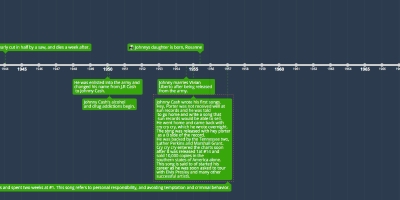New timeline
Category: Otro
Actualizado: 10 jun 2019
Autores

Created byAmazingrace 1
Attachments
Eventos
Pope John XXIII reveals
his plan to convene the
21st ecumenical council
of the Roman Catholic ChurchPope John organises a
group of bishops, leaders
of churches around the
world and theologians
to organise a general
overview of what Vatican
II would look like i.e what
topics it would cover. Over
9,300 proposals are submitted.Pope John XXIII organises
eleven different groups including
the Central Preparatory
Commission (CPC) which was
led by the Pope himself
each made up of theologians
and church leaders to establish
the agenda of Vatican II, from
the proposals put forward in
1959. However due to most
of the church leaders and
theologians in the groups
being based in Rome,
Pope John found that the
proposals put forward had
very "old fashioned" and
conservative views.Pope John XXIII calls the
second Vatican council to
occur in Vatican City the
following year. Non-Catholic
churches are invited to send
observers as well as Catholic
churches around the world,Pope John XXIII dies.Arrangements are made
to appoint a new PopeThe first session of
the 21st ecumenical
council, Vatican II,
commences in Vatican
City. Bishops, cardinals,
theologians, observers,
auditors, sisters, laymen
and laywomen all made
up over 3000 people who
attended Vatican II. Bishops
from 16 countries representing
many different continents i.e
Europe (1041), North & South
America (956), Africa (379),
Asia (256) & Oceania (70).10 council groups are
organised, elected on
by cardinals and bishops
attending Vatican II.The Vatican II council
establishes it's message
to the wider world, "to
focus its attention on
the major issues of the world"Documents concerning the
liturgy are discussed and a
redrafting process begins.
The council is divided with
some of the opinion that
the document should not
be changed with others
believing that it should be
changed to make it relevant
to the modern world.The first session of the
council comes to a close.Cardinal Giovanni
replaces Pope John
XXIII and changes
his name to Paul,
becoming Pope
Paul VI. He then
promises to continue
running the council
sessions of Vatican II.The second session of Vatican
II officially opens.The second session
of Vatican II ends after
Pope Paul XV eventually
approves the documents
of the Sacrosanctum
concilium i.e the constitution
on the liturgy and the decree
of social communications.The third session of
Vatican II officially opens.The department for
non-christian religions
is officially opened by
Pope Paul VI.The third session of
Vatican II ends, with
documents concerning
a decree on Ecumenism
and a Decree on Eastern
Catholic Churches,
approved by Pope Paul VI.
Ideas are also brought up
concerning potential
documents concerning
the churches relationship
with non-christians.The fourth session
of Vatican II begins.The fourth and final
session of Vatican II ends.
Documents about
Divine Revelation,
Pastoral Constitution
on the Church in the
Modern World and other
documents concerning
how the Catholic church
will now look in the
modern world are
approved by Pope Paul VI.After Vatican II concludes,
various commisions
suggest other changes
in the catholic teaching
e.g believing that
contraception is not
bad/evil as the church
taught.Períodos
Priests, bishops
and cardinals
around the world
were facing political
, social and technological
changes and felt there
was a need for these
issues to be addressed.
Comments